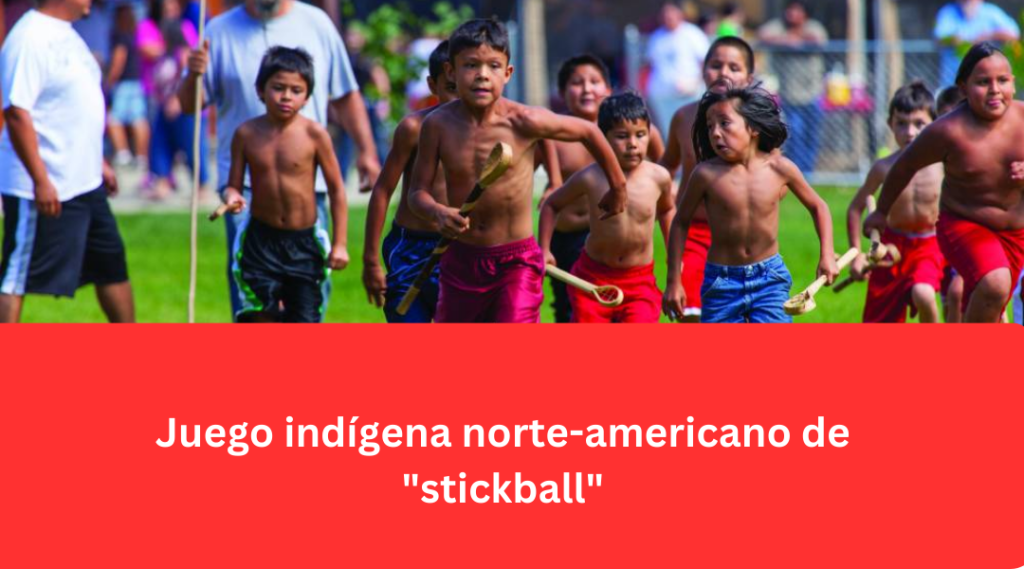Juego indígena norte-americano de “stickball”
The rhythmic beat of drums echoes through time, resonating with the rich cultural tapestry of North American Indigenous communities. At the heart of this cultural expression lies “Stickball,” an ancient game that transcends sport, weaving together tradition, spirituality, and community bonds. In this exploration, we delve into the depths of this indigenous art form, uncovering its roots, significance, and the unique mastery required to play the game.
Table of Contents
Toggle
Unearthing the Origins: Roots of North American Stickball
Stickball, also known as “Toli” or “Little Brother of War,” traces its origins to various Native American tribes, including the Choctaw, Cherokee, and Chickasaw. Historically, this game was more than a pastime; it was a sacred ritual, played to resolve conflicts, foster unity, and honor spiritual beliefs. The origins of stickball can be traced back centuries, with each tribe infusing its distinct nuances into the game.
The Sacred Elements: Rituals and Symbolism
Spiritual Connection through Gameplay
Stickball is not merely a physical contest; it is a sacred ritual that connects players with their ancestors and the spiritual realm. Before each match, participants engage in rituals, invoking the spirits for guidance and protection. The game itself is seen as a cosmic battle, reflecting the eternal struggle between light and darkness.
Symbolism in Stick and Ball
The equipment used in stickball holds profound symbolism. The sticks, crafted from hickory or other sacred woods, represent the players’ connection to the earth and nature. The ball, often made from leather or animal hide, symbolizes the sun and the cyclical nature of life. These elements, combined with intricate designs and colors, add layers of meaning to the game.
Mastering the Craft: Skills and Techniques
Precision in Stick Handling
Stickball demands a high level of skill in stick handling. Players must master the art of controlling the ball with a stick that has a netted or cupped end. The sticks are not only extensions of the players’ bodies but also tools that require finesse and precision. A deep understanding of the stick’s dynamics is crucial for success on the field.
Strategic Gameplay
Beyond individual skills, stickball is a strategic game that requires teamwork and communication. Players must anticipate the movements of their opponents, employing tactics to outsmart and outmaneuver the opposing team. The ebb and flow of the game reflect the harmony sought in Native American communities, emphasizing cooperation over competition.
Cultural Impact: Stickball Beyond the Field
Community Bonding and Identity
Stickball is a communal activity that fosters strong bonds within Indigenous communities. The game serves as a vehicle for transmitting cultural values, stories, and traditions from one generation to the next. It reinforces a sense of identity and belonging, creating a shared experience that extends beyond the playing field.
Preservation of Heritage
In an era of cultural assimilation, stickball stands as a resilient symbol of Native American heritage. The game has endured centuries of societal changes, adapting to modern times while retaining its core essence. The ongoing practice of stickball ensures that ancestral wisdom is preserved and passed down through the ages.
Challenges and Revival: Nurturing the Flame of Stickball
Modern Challenges
While stickball has stood the test of time, it faces modern challenges. Urbanization, changing lifestyles, and the encroachment of other sports pose threats to the continuity of this ancient game. Efforts to preserve and revitalize stickball traditions are crucial to maintaining the cultural fabric it represents.
Revival Initiatives
Communities and organizations are actively engaged in initiatives to revive and promote stickball. Tournaments, cultural events, and educational programs seek to reintroduce the game to younger generations, ensuring its survival. The adaptability of stickball is showcased as it finds its place in contemporary settings, bridging the past and the present.
Conclusion: The Enduring Legacy of Stickball
In the realm of North American Indigenous culture, stickball remains a living testament to resilience, spirituality, and community. Mastering this ancient art goes beyond physical prowess; it requires an understanding of tradition, a connection to the sacred, and a commitment to preserving a cultural legacy. As we dive deep into the world of stickball, we not only unveil a game but also embark on a journey through time, connecting us to the roots of Native American heritage.




